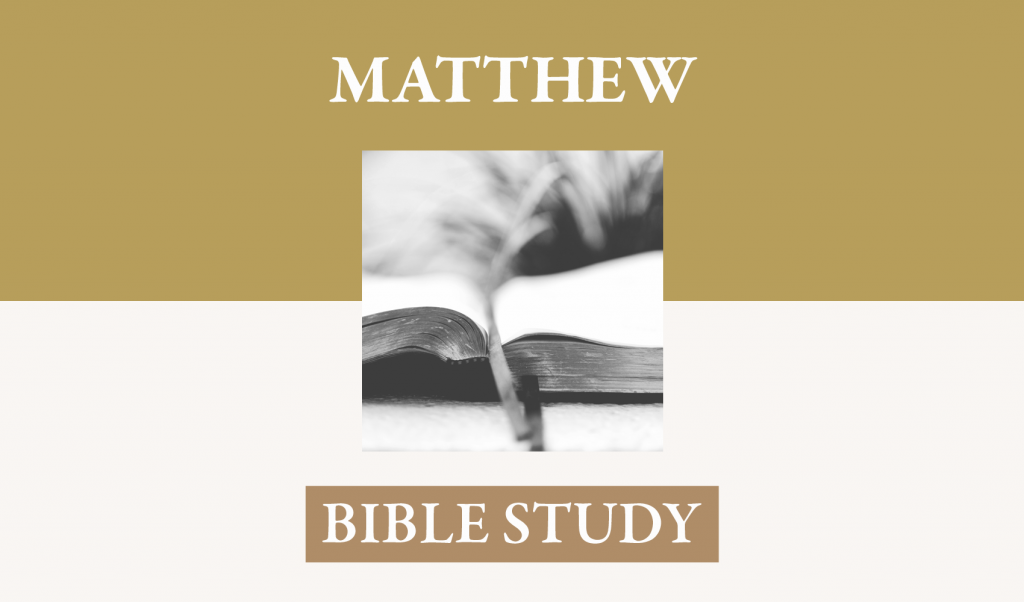I. Context: This event in found also in Mark 14:12-31 and in Luke 22:7-38. John 13-17 treats the events of this evening, adding a series of instructions Jesus gave his disciples, notably concerning the office of the Holy Spirit, and the high priestly prayer (chapter 17) for them and for those who would believe on him through their word. Jesus probably stayed at Bethany from Tuesday evening through Thursday afternoon. Jesus’ enemies were nursing their hostility and ramping up their plots to kill him (21:15, 23, 45f; 22:15, 18; 26:3). Judas, certainly aware of their desires and developing his own cynical attitude toward Jesus (John 12:4, 5), looked for the opportune time to make a deal with the chief priests for the arrest of Jesus (Matthew 26:14).
II. Preparation for the Passover – Verses 17-19. Matthew called this the “first day of unleavened bread,” meaning the fifteenth day of the Jewish month Nisan (Leviticus 23:6). Since the day began at Sundown, the removal of leavened bread and all other leaven from houses had begun on the 14th day sometime around noon. The seven days of this feast would be filled with the offering of various animals throughout the week as denominated in Numbers 28:16-25.
A. Preparing – Luke adds the detail (22:8) that Jesus approached Peter and John and told them to prepare the Passover. Matthew and Mark record only the question of the disciples.
- Perhaps they already had procured a lamb according to specifications, and on the afternoon of the 14th day, they went to the temple. According to Josephus, on this day as many as 256,000 lambs would be slain between 3:00 and 5:00.
- Broadus surmised, “So the disciples probably went to the city about noon, to procure a room, take a lamb to the temple court and slay it, roast the flesh with bitter herbs (Exodus 12:8) and provide bread and wine for the meal.
B. The Place – Jesus already knew where this meal was to take place for he had pre-arranged the venue. Even as he had prepared for the donkey on which he road into Jerusalem on the first day of the week, so he has made contact with another friend for the room.
- Jesus seemed not to have identified the man by name or even place, but, according to Mark and Luke told Peter and John to find a man carrying a jar of water. This apparently fortuitous event was probably a matter of supernatural knowledge. They should follow him to a home and then address its owner.
- The owner himself, however, had already been apprised of Jesus’ desire to use his home. Note the language.
- “The Teacher says” – This man knew Jesus as a Teacher, at least, and perhaps had a more profound knowledge of Jesus as Messiah and as the Lamb of God.
- They were to say, on behalf of Jesus, “My time is at hand.” This language always refers to the time of his death. That he expected this certain man to understand the gravity of this request, something that his disciples did not yet grasp, says that he was advanced in his understanding. One wonders in the course of Jesus’ ministry and his engagement with people at such a critical and intimate level, how many of these compliant and knowledgeable believers were scattered over the country.
- Mark added another detail, “And he will himself show you a large upper room furnished and ready.” This was prearranged by Jesus and the home’s owner gladly complied with Jesus’ request. A low table around which they could recline was present along with cushions
III. The Revelation of Betrayal – Verses 20-25
A. Note the irony of Jesus’ position of reclining while he announced that he would be betrayed. Two days earlier Jesus had said, “You know that after two days the Passover is coming, and the Son of Man will be delivered up to be crucified” (26:2). Jesus is doing more than just commenting on chronology. The significance of Passover is the placating of divine wrath in order to avoid the certain infliction of death. On that day he will die, and in doing so will “destroy him who has the power of death, that is, the devil” (Hebrews 2:14).
B. When Jesus reveals that the first event of his being “delivered up to be crucified” is a betrayal on the part of one of the twelve, all the disciples, with the exception of Judas, became deeply perplexed with this announcement.
- The disciples had now two sources for sorrow. One, their friend, teacher, and Lord was going to be taken from them; and, two, the first in the chain of events that would lead to his death would be a betrayal from within.
- The question, “Is it I,” indicates a true awareness of the possibility of self-deceit while also having no previous consciousness that such a scheme could enter their mind. They knew Jesus understood them well and perhaps was pointing to something in them that was yet to be provoked by the horrific circumstances that would arise. Their tinge of self-doubt would find justification in what Jesus said after the meal and the hymn, “You will all fall away because of me this night.” Peter’s flight due to fright would be particularly egregious (26:31-35).
- Judas apparently was the last to ask the question (25), but only after Jesus had declared the true heinousness of the act. He knew he was the one, but could hardly avoid asking since not to ask would be a virtual admission of guilt. To him Jesus responded, “You have said it,” or “It is as you say.” Judas already knew it, of course, and now Jesus revealed to him that he knew about the entire plot.
- When Jesus said “He who has dipped his hand in the dish with me will betray me,” he did not point to a specific person, for all of them had done that. He pointed to the deeply contorted sinfulness of this betrayal.
- They were involved in a meal that signified a miraculous deliverance from death and one of them would deliver him to death.
- They were partaking of the Passover lamb only to reject the one who was the true Passover (1 Corinthians 5:7).
- They dipped into the mixture of oil and bitter herbs as a bond of fellowship, yet the betrayer resented the fact that Jesus had submitted to take upon himself the bitter cup so that others might not drink it for themselves. In so doing, the betrayer would contribute to the thing he resented and take to himself the bitterness of eternal death.
- John adds a detail omitted in the synoptics. John asked Jesus, “Lord, who is it?” Jesus responded with the sign of sharing a dipped morsel with the perpetrator. Even with this definite sign, it seems that such distraction and perplexity prevailed that the disciples did not really grasp the clarity of this indication. When Jesus told Judas to get on with the dark purpose, the disciples were confused about what he had told him and why Judas was leaving (John 13:25-30). The whole event is one of deep confusion, sadness, personal introspection, self-doubt, alarm, and dismay. The only one who maintains balance is the one to be betrayed.
C. The nature of God’s decrees and consequent actions of providence.
- “The Son of Man goes as it is written of him” – As the weight of messianic prophecy points to the cutting off of the Son of Man (Isaiah 53:7-9; Daniel 9:26; Zechariah 13:7: “’Awake, O sword, against my shepherd, against the man who is my companion,’ says the Lord of hosts. Strike the shepherd and the sheep will be scattered.” Jesus refers to this very Scripture on this occasion (26:31). God has decreed the death of this one in order to gather the redeemed people (Zechariah 13:9). See also Luke 24:25-27, 46.
- The prophecies are based on the eternal covenant of redemption in which a certain people was given to the Son (John 6:37; 10:14, 15, 27-30; 17:2).
- It was certain, therefore, that he would lay down his life for them, for only on that basis would the ones given to the Son be brought to eternal life.
- Paul concluded that the entire work of reconciliation is from God: “All this is from God, who through Christ reconciled us to himself, and gave us the ministry of reconciliation” (2 Corinthians 5:18).
- “Woe to that man by whom the Son of Man is betrayed.”
- Woe – The word communicates a sense of deep remorse and regret while recognizing the perfect justice of what awaits the person upon whom the woe is pronounced.
- “Woe” also indicates that the verdict includes a just abandonment to vengeance. Though the event is decreed, the one by whom the decree comes to pass bears full moral responsibility for his action. Just as Jesus, the one about whom the prophecies are made and who came to the world to pursue this event that was decreed for him, is just, righteous, and morally commendable (Philippians 2:8) in his perfect obedience to the immutable decree, so the one who betrays this righteous one has a deserved load of guilt on him. John Gill noted, “God’s decrees concerning this matter, and the predictions in the Bible founded on them, did not in the least excuse, or extenuate the blackness of his crime; who did what he did, of his own free will, and wicked heart, voluntarily, and to satisfy his own lusts.”
- “That man” – This particular son of Adam, one who has descended from the corrupted and guilty head of the race now adds his own transgression to his innate condemnation and corruption (Romans 5:12, 16).
- “Son of Man” – Jesus frequently used this designation for himself, not only to identify with the prophets (Daniel 7:13; cf. John 12:34; Luke 22:69ff), but to establish the idea of the new creation, the fellowship of those who are born again. Jesus is the new man, the second Adam. He is the head, not of the corrupted race, but of the redeemed race. It is his sinless humanity, his glorious resurrection to which the redeemed will be conformed. He is the goal as well as the source of all those who will be received into his kingdom (Colossians 1:13), those to whom he has given authority to be and become sons of God (John 1:12. 13), and of those who will be transformed into his image (Romans 8:29f; Philippians 3:21; 1 John 3:2, 3).
D. “It would have been better for that man if he had not been born.”
- Jesus proclaims about such a betrayer that non-existence, or never having existed, would be a better state than that to which “that man” will be assigned. Again, this points to the inescapable moral consequences of all our actions. Though it would be better for “that man” not to have been born, nevertheless, it will be glorious in the end for all who are redeemed by the substitutionary death of this Son of Man who was so betrayed.
- This verdict has several implications for the state of eternity.
- This statement eliminates annihilationism for that particular view of punishment means that the person will reach a state of non-existence, or as if he had never been born.
- It removes the possibility of secondary probation after death. That condition would mean that a person assigned to punishment could reverse that state and enter into the state that is better than the one into which he was born.
- It eliminates universalism for in that view it could never be said about anyone the pronouncement Jesus made about his betrayer.
IV. Symbols in Perpetuity – verses 26-29 The text in Matthew does not record Jesus’ establishing this as an ordinance of remembrance, not does Mark (14:22-25). Luke 22:19 recorded the words, “Do this in remembrance of me” after the giving of the bread. John does not record that part of the meal at all. In 1 Corinthians 11:23-26, Paul gives a straightforward presentation in which he records Jesus using the words of remembrance after both the bread and the wine.
A. Establishing a symbolic meal. Jesus used the words “Take, eat; this is my body.” Also with the cup he said, “This is my blood of the covenant, which is poured out for many for the forgiveness of sins.” Romans Catholics believe that transubstantiation takes place and the elements, maintaining al the appearance, feel, and taste of bread of wine actually become the real flesh of Christ and the true blood of Christ. Lutherans believe in the “real presence” but not in transubstantiation. Because of Christ’s omnipresence, and through the words spoken, Christ’s body and blood actually are present in the elements of the Supper, so they believe.
B. The biblical narrative supports the idea that this is the use of a symbol by Jesus.
- Jesus often used the verb of being to speak of a symbol that depicted some aspect of his redemptive work. “I am the door of the sheep” (John 10:7). John, in fact, called this manner of teaching a “figure of speech” or a “similitude” (10:6) “I am the true vine” (John 15:1). At Passover, Jews would say, “This is the bread of affliction,” meaning it is a symbol of the affliction they had endured in Egypt. Jesus’ words, therefore, recalled this emblematic power already present in the Passover meal.
- The historical reality is that Jesus stood before them and had not yet had his body broken nor his blood shed. He called the wine (“this is”) the “blood of the covenant which is poured out for many for the forgiveness of sins.” That blood had not yet been shed, for, in accord with the covenant, it would be shed, poured out, but once to accomplish forgiveness. The book of Hebrews gives clarity that the reality of that historical event cannot be duplicated; in fact, it need not be duplicated for in completing the covenantal provisions it was sufficient once and for all (Hebrews 7:27; 9:12, 15, 24-28; 10:9, 10, 14, 18; 13:20, 21).
- The symbols are to remind us of the perfect satisfaction provided by Christ in his once-for-all death on the cross. They do not draw attention to themselves as having any efficacy, but to the single event in which reconciliation occurred. He poured out his blood for many and in that death he brought to justification the many for whom he died: “By his knowledge my righteous servant shall justify many, for he shall bear their iniquities . . . He poured out his soul unto death . . . He bore the sin of many, and made intercession for the transgressors” (Isaiah 53:11,12).
- Salvation comes not through any kind of intrinsic efficacy in the material elements of bread and wine themselves; rather it resides in the satisfaction of divine wrath justly manifest in time and space on one of our race who could lawfully, ontologically, and morally stand in as our substitute. Jesus was morally qualified to suffer vicariously for he had no sin of his own for which he must die. He was truly man and stood as our covenant head. He had a human body, a human mind, a human spirit all of which must endure fully the divine wrath due his people. This he did during his hours on the cross and finished the suffering. No more will his blood be shed nor his body broken. His life was poured out with his blood on the cross and there is no occasion in which the blood of the covenant must be poured out again.
C. It is a memorial. The passage in Luke 22 and in 1 Corinthians 15 point to the reality that in partaking of the Lord’s Supper we remember what he did.
- We do not look to the elements of which we partake at that moment of redemptive significance in themselves, but only as they point us to the historic, time-space sacrifice of Christ. The symbols call us to look to Christ himself, presently interceding for us on the basis of the blood he shed at Calvary.
- Establishing a memorial meal. As they were taking the Passover Jesus gave a simplified partaking of elements. The Passover had been predictive and prospective. God would provide a lamb in the future who would take away the sins, not of the Jews only, but of world. The Lord’s Supper as a memorial looked to that which already was accomplished and was retrospective as the past work of Christ was to be surveyed by the heart in calling to mind the greatness of the sacrifice. “When I survey the wondrous cross on which the Prince of Glory died, my richest gain I count but loss, and pour contempt on all my pride.” The element of the prospective was reinserted as we now look to the coming-again of the Lord. “Christ, having been offered once to bear the sins of many, will appear a second time, not to deal with sin but to save those who are eagerly waiting for him” (Hebrews 9:28).























